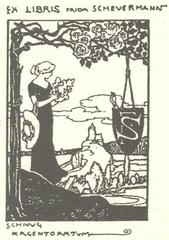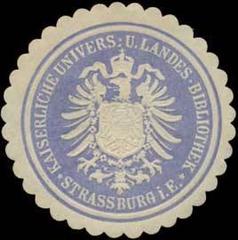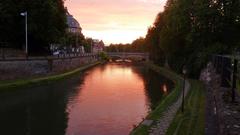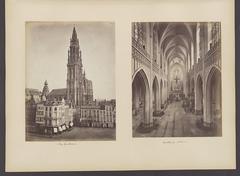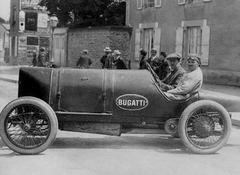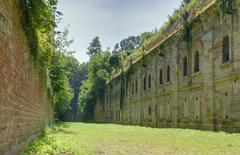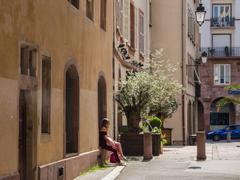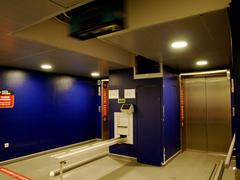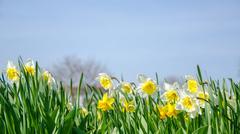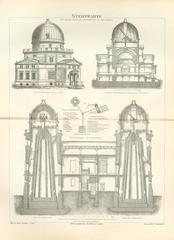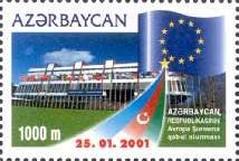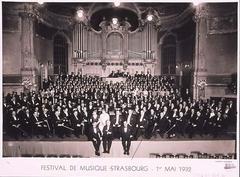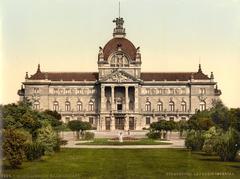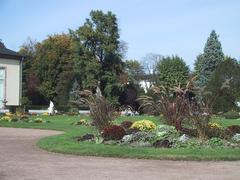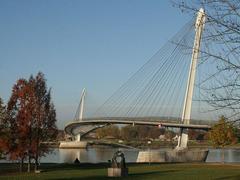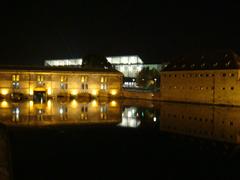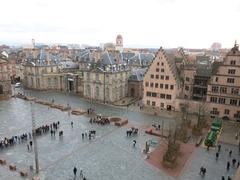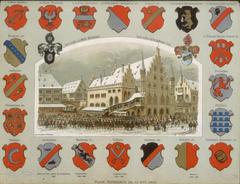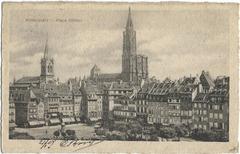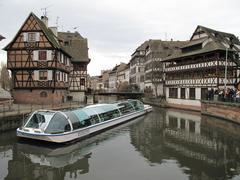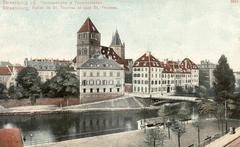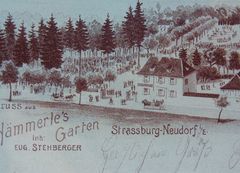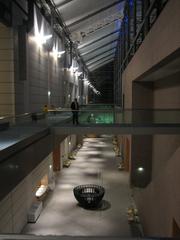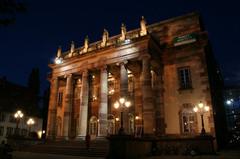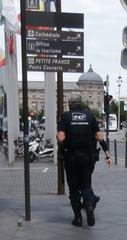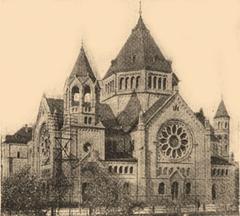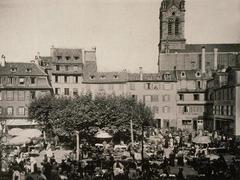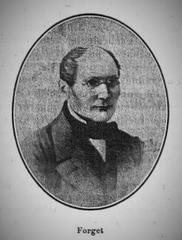Seat of the European Parliament Strasbourg: Visiting Hours, Tickets, and Visitor Guide
Date: 14/06/2025
Introduction: The European Parliament in Strasbourg—A Symbol of Unity and Democracy
Visiting the European Parliament in Strasbourg invites you to experience the heart of European democracy within a striking architectural setting that reflects the continent’s ideals of transparency, unity, and peace. Located in Strasbourg’s historic European Quarter, the Parliament not only operates as the legislative voice of more than 400 million EU citizens, but also stands as a powerful symbol of reconciliation between former adversaries France and Germany. The Louise Weiss building, inaugurated in 1999, anchors this legacy with its contemporary glass design—an emblem of openness and the ongoing journey of European integration (strasbourg-europe.eu; visitstrasbourg.fr; archello.com). Whether you’re a student, traveler, or history enthusiast, a visit here unlocks insights into the workings of the EU and the heritage of Strasbourg (europarl.europa.eu; visit.alsace; enjoystrasbourg.com).
Table of Contents
- Strasbourg’s European Legacy: From Conflict to Reconciliation
- Milestones in the Development of the Strasbourg Seat
- The Louise Weiss Building: Architecture and Visitor Experience
- Visiting Hours, Tickets, and Practical Information
- Getting There: Directions and Transport
- Highlights of Your Visit
- Accessibility and Facilities
- Events, Exhibitions, and Educational Programs
- Frequently Asked Questions (FAQ)
- Conclusion and Final Tips
- References and Further Reading
Strasbourg’s European Legacy: From Conflict to Reconciliation
Strasbourg’s designation as the seat of the European Parliament is steeped in symbolism. The city’s complex history—marked by frequent shifts between French and German rule—culminated in its selection as a postwar center for reconciliation and dialogue. Hosting the Council of Europe since 1949 and the European Parliament since the early 1950s, Strasbourg embodies the EU’s founding principles of peace and cooperation (strasbourg-europe.eu).
Milestones in the Development of the Strasbourg Seat
Key Historical Moments
- 1949: Council of Europe founded in Strasbourg, signaling a continent-wide commitment to human rights.
- 1952: The forerunner to the European Parliament, the Common Assembly of the ECSC, meets in Strasbourg.
- 1962: Assembly renamed “European Parliament.”
- 1997: The Treaty of Amsterdam formalizes Strasbourg as the Parliament’s official seat.
- 1999: Louise Weiss building inaugurated, representing transparency and the ongoing evolution of the European project (strasbourg-europe.eu; visitstrasbourg.fr).
The Louise Weiss Building: Architecture and Visitor Experience
The Louise Weiss building, designed by Architecture-Studio, is a striking blend of glass, steel, and regional Alsatian sandstone. Its 60-meter-high, intentionally “unfinished” oval tower symbolizes the ongoing journey toward European unity. The main avenue, inspired by Roman amphitheaters, is filled with natural light and lush greenery, fostering a sense of inclusivity and openness (archello.com).
Key features:
- The Hemicycle: Europe’s largest parliamentary chamber, seating up to 785 MEPs, with public galleries for visitors.
- Simone Veil Parlamentarium: An interactive visitor center with multimedia exhibits, 360° cinema, and touchscreen displays.
- Panoramic Terrace: Offers exceptional views of the European Quarter and Strasbourg’s skyline.
- Sustainability: Energy-efficient systems and local materials highlight the Parliament’s green commitment (archello.com).
Visiting Hours, Tickets, and Practical Information
Visiting hours:
- Monday to Saturday: 9:30 am–12:00 pm and 1:00 pm–5:00 pm
- Closed Sundays and certain public holidays or special events.
- During peak times (July, August, December), visits may be limited to multimedia audio guides (visit.alsace; hellotickets.com).
Tickets:
- Admission is free.
- Individual visitors using multimedia audio guides do not need advance booking.
- Groups of 20+ should reserve guided tours ahead of time (visiting.europarl.europa.eu).
Security and Entry:
- Valid passport or national ID required for all adults.
- Airport-style security screening at the entrance.
- Arrive at least 30 minutes before your timed visit (hellotickets.com).
Getting There: Directions and Transport
The Parliament is located at 1 Allée du Printemps, Strasbourg, in the Wacken district.
Transport options:
- Tram: Line E, stop “Parlement Européen.”
- Bus: Lines H (direct), 6, 30, and 72 to “Droits de l’Homme,” then a 10-minute walk.
- Car/Coach: Limited public parking; coach parking on Boulevard Pierre Pflimlin. Public transport is recommended (visiting.europarl.europa.eu).
Highlights of Your Visit
- Multimedia Audio-Guided Tours: Available in 24 official EU languages and offer an engaging overview of the Parliament’s architecture, history, and legislative process.
- Guided Group Tours: For groups of 20+ by reservation, available in French, German, and English.
- Plenary Sessions: Observe live debates and votes from the public gallery (twelve sessions per year). Silence and respectful conduct required; no flash photography.
- Simone Veil Parlamentarium: Discover interactive exhibits and a 360° cinema on European democracy (visit.alsace).
- Panoramic Terrace: Take in breathtaking views of Strasbourg and the European Quarter.
- Combine with Local Sights: Strasbourg Cathedral, La Petite France, Parc de l’Orangerie, and other European institutions are nearby (strasbourg-europe.eu; hellotickets.com).
Accessibility and Facilities
- Fully accessible for visitors with reduced mobility—notify visitor services in advance if possible.
- Wheelchair access, accessible restrooms, and assistive hearing technologies available.
- Cloakrooms for coats and small bags.
- Wi-Fi in public areas.
- On-site cafés and snack bars for refreshments (europarl.europa.eu).
Events, Exhibitions, and Educational Programs
- Special Events: Europe Day (9 May), open days, concerts, and temporary exhibitions.
- Educational Activities: Programs like Euroscola and interactive role-play games for school groups (advance booking required).
- Sustainability Initiatives: Energy-saving measures and promotion of public transport use (europarl.europa.eu; archello.com).
Frequently Asked Questions (FAQ)
Q: Are there entrance fees?
A: No, admission is free for all visitors.
Q: Do I need to book in advance?
A: Individual visitors do not need to book for multimedia audio guides; groups should book guided tours.
Q: What identification do I need?
A: A valid passport or national ID card.
Q: Is the building accessible for disabled visitors?
A: Yes, the facility is fully accessible.
Q: Can I attend a plenary session?
A: Yes, from the public gallery; seats are limited and allocated on a first-come, first-served basis.
Q: Are photos allowed?
A: Yes, photography (without flash) is permitted except during certain events or in restricted areas.
Q: Which languages are tours available in?
A: All 24 official EU languages.
Conclusion and Final Tips
A visit to the European Parliament in Strasbourg is more than a tour; it’s a firsthand encounter with Europe’s democratic processes and cultural heritage. The Louise Weiss building stands as a beacon of openness and inclusivity amidst the vibrant European Quarter. For the best experience:
- Check plenary session dates and book group tours in advance.
- Arrive early for security and to enjoy all facilities.
- Explore nearby Strasbourg historical sites for a full cultural day.
- Stay informed on special events and exhibitions via the official visitor portal and apps like Audiala.
By planning ahead and taking advantage of free resources and multilingual support, your visit will be both memorable and meaningful—an immersion in the ongoing story of European unity (strasbourg-europe.eu; europarl.europa.eu; visitstrasbourg.fr).
References and Further Reading
- strasbourg-europe.eu
- archello.com
- visiting.europarl.europa.eu
- europarl.europa.eu
- visit.alsace
- hellotickets.com
- connexionfrance.com
